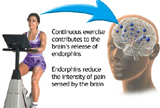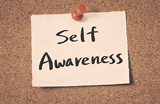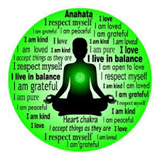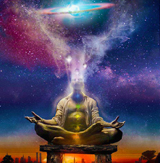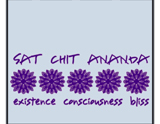Consciousness and health
An integral exploration of the benefits of meditation
Abstract
Meditation can be defined as a systematic form of mind-training brought about through our concentration on a predetermined object of focus. In this article, we will explore the comprehensive and integral benefits derived from the practice of meditation.
The transformative powers of meditation have been ascribed to by many ancient cultures and traditions. Today, meditation practices are immensely influential among educational institutions, contemporary thinkers, medical professionals, poets and psychologists. Currently, in the United States, ‘mindfulness training’ a subset of awareness-related practices, is springing up in an eclectic range of arenas. It’s found in the corporate world, in mainstream allopathic medicine, in yoga āsana centres and in business consulting firms. Likewise, in large, established, more progressive corporate companies like Google and LinkedIn, we see entire programmes with dedicated staff encouraging the role of mindfulness at the individual and interpersonal level. Highly-regarded hospitals are complementing their treatment plans with meditation techniques to relieve both pain and stress. Medical and psychological professionals have likewise been prescribing these approaches for pain management, stress reduction and a host of anxiety and depressive mood disorders.
In the discussion to follow, we will look at the numerous benefits of meditation and their relationship to a psycho-spiritual evolution. While this paper focuses mainly on a structured meditation approach, we are quick to remember that this practice need not be confined strictly to the meditation cushion. Rather, as Sri Aurobindo reiterates: “All life is Yoga.” Every action expressed through body, speech and mind can be used as a practice for radical spiritual migration. Taking up self-awareness as a discipline, being fully present in every moment, in every encounter, is how one lives intentionally. Yet, structured programmes can, for some, be a portal in harnessing our energies towards an ascending evolution trajectory. It provides a mechanism to formulate a positive conditioned response that we can stabilise with a certain consistency and mastery. Today, perhaps more than any other time in history, we are confronted with endless distractions. Maintaining a mind that is still, clear, alive and blissful has perhaps never been more difficult to sustain than in our present day global, technological world culture.
1. Mind training
As stated previously, meditation can be defined as a systematic form of mind training brought about through one’s concentration on a predetermined object of focus. A mind that has been disciplined to rest on an object is a mind that has greater clarity and depth. A mind that can more easily rest with an issue or a problem is a mind that can more thoroughly explore its multiple dimensions, and concentration breeds professional and personal success. A mind that is still and aware in the moment is more profoundly connected to people, places and things. Thus, through a disciplined meditative practice we become deeper, more present thinkers and more thoughtful and compassionate human beings.
2. Improved health
The great Indian Ṛṣis, highly evolved yogic seers and sages, found a symbiotic relationship between body and mind, linked by the breath. From the Ṛṣis’ enlightened vantage point, where the mind goes, so too goes the breath, and where the breath goes, so too goes the mind. This is a profound knowing. What this means is that when we are able to control and calm our minds, we simultaneously affect our breath, directly impacting our physiological well-being, such as, heart rates, blood pressure, body heat and perspiration, etc. And through the practice of breath control, prāṇāyāma, we have the single most powerful tool to directly impact our thoughts and mental states which circle back to positively impacting our health.
3. Emotional well-being
New technology in brain imaging is helping us amass scientific data substantiating the wisdom of ancient spiritual traditions that have repeatedly stated that the quality of our thoughts is paramount to the quality of our being. Clinical studies show that increased endorphins improve the immune system which in turn improves both mental and physical health. It is now known that when one imagines an event, the exact same brain functions are activated as when one is actually experiencing the event directly. When the focused object of our meditation is for example, compassion, or loving kindness or a beautiful sunset, the correlating physiological and emotional responses are processed in the body as if one were directly experiencing the actual sensation, interaction or situation. Research shows that Buddhist monks meditating on loving kindness and compassion, instantly register remarkable changes to their prefrontal cortices, areas responsible for positive emotions and consequently enhanced states of well-being.
4. Recalibrating undesirable emotional states
Emotions are triggered when one or more of our five senses register sense-data, which is then relayed to the brain, mind and memory, producing an autonomic physiological and emotional response. For example, we have just witnessed a threatening situation, we are sweating, our pulse is racing, our heart is pounding. How did all of this transpire? Our eyes, for example, send a visual message to the brain, the brain deduces through instincts, memory and other mental processes that there is danger and our autonomic response system kicks in, activating a fight, flight or freeze reaction. We might start trembling, the heartbeat starts racing and we perspire, as we experience these primal emotions. The mind is a powerful link in the process and through the mind, we can alter, redirect and calm these emotions. This knowledge, coupled with the fact that there is a symbiotic relationship between mind and body linked by the breath, as referred to earlier, makes meditation a very practical and effective tool in dealing with the life challenges that are thrust upon us. We have in essence, at our disposal, a practical and effective tool, on demand, for emotional rebalancing, something that can restore us back to a calmer and clearer emotional state.
5. Awareness meditations
The transformative power ascribed to self-awareness meditation has been embraced by many ancient spiritual traditions. In the Hindu-based Kriya Yoga tradition, it is known as Shuddi Dhyana. In the Zen Buddhist tradition, it is referred to as Shikantaza. For Tibetan Buddhists, there is Mahamudra and Dzogchen while Theravada Buddhists practise Vipassana or Insight meditation. These formless meditative practices, though known by various names, vary only slightly in their techniques. What is common to all of them is the presence of an awareness-mind consciousness; a mind that is fully engaged in the present moment, in the here and now, in a continuous flow. This awareness state can be likened to taking the position of the film director rather than the actor. It requires that we rest in the place of observation and resist the forceful pull to entertain whatever sense/mind distraction is arising in the moment. This simple act of mentally stepping outside of ourselves to observe the nature of our mind, caught in whatever undesirable momentary mental state, immediately deflates the intensity of the moment and allows us to experience the event from a broader, calmer, more accepting perspective. We are no longer in the grips of the troubling present moment but rather the observer to our own drama, an act that creates an immediate shift.
While rather simple to describe, the ability to master this state can be quite challenging, yet awareness meditation, with its focus on undivided attention to the present moment, can elicit cathartic inner states of insight, joy and wisdom.
6. Awareness meditations — unblocking psychological dynamics
One of the most confounding mysteries and challenges facing us as human beings is that we are often strangers to ourselves. Often, behaviour, reactions and feelings that arise in the moment are provoked by ancient patterns, whether personal, ancestral or transpersonal, lodged in our subconscious and unconscious. While a certain amount of self-denial may be self-protective and thus should be honoured, ongoing lack of self-disclosure makes for a life that feels disconnected, distorted, bewildering to ourselves and alienating to others. The power of self-awareness allows us to firstly garner insight into the cause of the issue at hand breaking through into a deeper intellectual, emotional and psychological understanding of our situation.
A case drawn from personal clinical experience exemplifies this point. A patient had been hounded and bullied by an older brother as a child, told he was incompetent, inadequate and a truant. Decades later, when this man’s wife made a comment that struck him as judgmental — regardless of her intent — it triggered a fit of rage directed towards her, recapitulating the past trauma with his brother. These earlier experiences are stored in our library of memories, and each time we encounter a similar situation, without the filter of awareness, our response is automatic and repetitive. In these moments, we’re reacting to the present through our ancient history; the childhood experiences we still harbour in our subconscious. As in the case of the above patient, this 59-year-old man was reacting to his wife with the emotional and visceral response of that prior 9-year-old boy.
As we sit in the stillness of our minds, our psyche makes room for layer upon layer of subconscious thoughts to bubble to the surface. Once it is brought to the light of our awareness, a process of unfolding and healing begins. The removal of psychological blocks is imperative, without which we cannot ascend up our psycho-spiritual evolution and without which entry into higher states of consciousness is impossible.
7. Accessing the divinity within
There is a speck of divinity residing in our incarnate self that links us to our greater non-dual Self, referred to by different names in different traditions. We’re primarily detached from our psychic being because our physical, emotional and mental functions are so dominant. We’re stuck in this human-imposed glass ceiling, preventing us from accessing the psychic self, unable to tap into higher states of consciousness that reside within us. As we sit in meditation focused in the heart chakra, an opening occurs, a knot is loosened, a more blissful state of contentment and interconnectedness arises.
Sri Aurobindo describes the essence of the soul or psychic being as follows:
“It is the very nature of the soul or the psychic being to turn towards the Divine Truth as the sunflower to the sun; it accepts and clings to all that is divine or progressing towards divinity and draws back from all that is a perversion or a denial of it, from all that is false and undivine (1).”
8. Evolution in ego-morality
A centrepiece of Sri Aurobindo’s Yoga was the affirmation that man is equipped with an intrinsic evolutionary capacity for psycho-spiritual growth. Behavioural psychologists have subsequently been at work identifying and mapping stages of ego development correlated with moral development. The overarching tenant of their mapping is that human development grows from a narrow egocentric human concern to a universal human care as an individual grows along a psycho-spiritual line. The following clinical findings, pointing to the impact that meditation has to positively impact this development line, are impressive.
Dr. Jane Loevinger performed clinical studies working with college students. She found that 38% of students who meditated regularly reached their highest ego level, compared to only 1% of students who did not (2).
Dr. Susan Cook Greuter, likewise conducted studies and found that 39% of individuals who meditated regularly reached her highest development level tested, the ‘integrated’ stage, compared to 0.05 of the remaining adult population (3).
The implications of these findings are remarkable, as one envisions the rapid transformative power potentially contained in meditative practices. The social fibre of humanity can in essence evolve from egocentric self-concerns to greater altruistic concern, from a narrow self-care to a universal care for self, others and all sentient beings including the planet and the cosmos.
9. Entry to higher levels of consciousness
According to the ancient yogic tradition, the greatest achievement of this precious human life is to bring about a positive self-transformation and to arrive and reside in higher and higher states of consciousness. In order to enter these realms, we must create a fertile ground and foundation and eliminate those conditions that keep us enmeshed in lower levels of being. One prerequisite for entering these states is to still the mind. The ocean offers a vivid analogy: we cannot see the beauty of the coral if the waters are agitated, or if we are fixated on the seaweed.
Perhaps no one has delved more deeply in depicting the transformative powers and levels of ourmental, spiritual and transpersonal evolution than Sri Aurobindo. According to his spiritual discovery, man is a transitional being who is still evolving. There are higher and higher ranges of consciousness that will begin to manifest in due process of time. He reveals:
“Each stage of this ascent is therefore a general, if not a total, conversion of the being into a new light and power of a greater existence.
“The gradation itself depends fundamentally upon a higher or lower substance, potency, intensity of vibrations of the being, of its self-awareness, of its delight of existence, of its force of existence. Consciousness, as we descend the scale, becomes more and more diminished and diluted, — dense indeed by its coarser crudity, but while that crudity of consistence compacts the stuff of Ignorance, it admits less and less the substance of light; it becomes thin in pure substance of consciousness and reduced in power of consciousness, thin in light, thin and weak in capacity of delight; it has to resort to a grosser thickness of its diminished stuff and to a strenuous output of its obscurer force to arrive at anything, but this strenuousness of effort and labour is a sign not of strength but of weakness. As we ascend, on the contrary, a finer but far stronger and more truly and spiritually concrete substance emerges, a greater luminosity and potent stuff of consciousness, a subtler, sweeter, purer and more powerfully ecstatic energy of delight (4).”
This is a particularly evocative immersion in Sri Aurobindo’s hierarchical spiritual evolutionary model. An analogy can be made to a ladder vertically positioned, each rung becoming expansively more or less receptive to either light or darkness. Indeed, one’s perception is augmented and enriched as one’s consciousness ascends, approaching higher truth, so that what began as a mere glint becomes a deluge of radiance as one climbs. As one’s consciousness descends, the all-pervading brightness is choked, unable to penetrate through and one finds oneself in progressively denser, darker, more ignorant states of being, lacking exuberance, increasingly in a struggle to simply exist.
According to Sri Aurobindo, the spiritual man in his most evolved form is a gnostic being, wholly attuned to and aligned with the highest divine principles, inhabiting a unified, continuous self-awareness, having shed all attachment to a personal ego, persona or mask. The gnostic being lives in an uninterrupted relationship with the ‘Trinity of Spirit’, understood in Hindu theology as Sat (Existence), Cit (Consciousness-Force), Ānanda (Bliss), loosely analogous to the Christian concept of the Father, the Son and the Holy Ghost. In his gnostic state, man’s indwelling conscious Self mirrors the transcendental reality of the cosmic Spirit.
“The gnosis is the effective principle of the Spirit, a highest dynamis of the spiritual existence. The gnostic individual would be the consummation of the spiritual man; his whole way of being, thinking, living, acting would be governed by the power of a vast universal spirituality. All the trinities of the Spirit would be real to his self-awareness and realised in his inner life. All his existence would be fused into oneness with the transcendent and universal Self and Spirit; all his action would originate from and obey the supreme Self and Spirit’s divine governance of Nature (5).”
In the following quote, Sri Aurobindo’s depiction of the gnostic man, possessed by a super-mental awareness, takes us to the farthest frontiers conceivable in man’s evolution, up to this point in human history.
“A life of gnostic beings carrying the evolution to a higher supramental status might fitly be characterised as a divine life; for it would be a life in the Divine, a life of the beginnings of a spiritual divine light and power and joy manifested in material Nature. That might be described, since it surpasses the mental human level, as a life of spiritual and supramental supermanhood (6).”
A meditative practice of stilling the mind, opening the heart, immersed in self-awareness is one of a handful of powerful practices that can be used as a compass on this psycho-spiritual quest. Arriving at these levels of evolution was not for Sri Aurobindo a product of fervid imagination, but rather a real and inevitable destination; man’s potential made manifest.
It may be mentioned that the Integral Yoga of Sri Aurobindo is not a yoga of meditation alone. It is an intense, all-comprehensive yoga where all the parts of the being engage in this seeking and fulfilment by the touch of the higher planes. Such a discussion is however well beyond the scope of this article which is concentrated on meditative practices.
Conclusion
In this work, we have investigated the various benefits derived from meditation and its impact on our physical, mental and psycho-spiritual transformation. Its benefits range from increased concentration; improved health; emotional well-being; accessing psychological blocks; touching the divinity within; evolution in ego-moral development; up to the entry into the highest levels of spiritual/transpersonal states. Indeed, its applications are vast; from practical to spiritual; from personal to transpersonal; from a method of self-improvement to a vehicle of self-transcendence. Whether in our day-to-day experiences or in the depths of deep meditation retreats, meditation assists wherever it finds us, leading us to the next rung of our personal evolution. And as each drop of water comprises the totality of an ocean, so too each one of us contributes invaluably to the collective evolutionary process of our human family.
Reference
1. Sri Aurobindo. Birth Centenary Library, Volume 20. Pondicherry: Sri Aurobindo Ashram Trust; 1970, p.144.
2. Loevinger J, Cohn LD, Bonneville LP,Redmore CD, Streich DD, Sargent M. Ego Development in College. Journal of Personal and Social Psychology 1985; 48(4): 947.
3. Greuter SC. Adult Development, Volume 2. New York: Praeger Publishers; 1990, pp. 79-104.
4. Sri Aurobindo. SABCL, Volume 19, 1970, pp. 938-9.
5. Ibid., pp. 971-2.
6. Ibid., p. 1067.
Dorathea Thompson is an integrative psychoanalyst in private practice in New York City.
Share with us (Comments,contributions,opinions)
When reproducing this feature, please credit NAMAH,and give the byline. Please send us cuttings.



